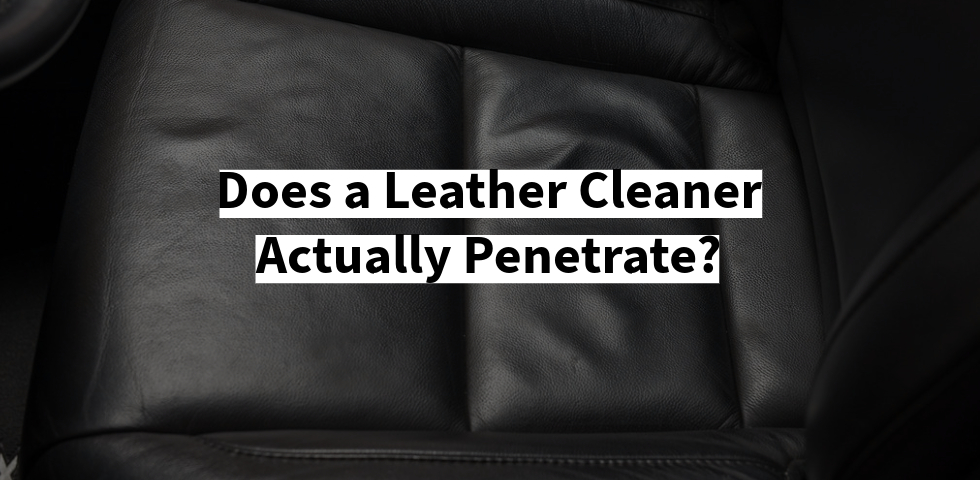
This article is written by Ram Iyer of Geist. Read more about leather surfaces and caring with them using Geist items below!
In order to understand if conditioners penetrate in real leather, it is important to dive deeper into how leather is finished for automotive interiors.
The early cars inherited their seats from carriages, utilizing leather that was veg tanned that was porous and absorbent. Water penetration and heat would cause these leathers to harden, similar to tramping boots. To prevent water from washing out the tanning acids, these leathers were heavily waxed, greased, and oiled, resembling the treatment of boots and saddles.
From the 1920s to around 1980, nitrocellulose lacquers were commonly used to coat automotive leather, particularly high-quality full grain leather like Connolly. However, these lacquers were eventually phased out due to issues caused by their unstable plasticizers. Sun exposure would heat them, resulting in ‘fogging’ or an oily film on the internal surfaces of windows.
To address the problem of cracking and brittleness, oil-based creams, waxes, and oils containing solvents were employed to maintain flexibility. Although these treatments were effective, the thin and flexible lacquers tended to dry out and crack over time.
In the early 1970s, first-generation acrylic polymer lacquers that were crosslinked were introduced for car leathers. The issues with these types of lacquers was their thick consistency and tendency to crack and yellow. As a consequence, these were gradually replaced by polyurethane finishes in high-quality vehicles. Polyurethane provided superior qualities such as long-term flexibility, water vapour permeability, and air permeability. This is what is in use even today. With these changes, the care regimen for automotive leather also evolved.
The focus shifted to using protective products in the first years to safeguard against polymer rub-off, scratches, clothing dye penetration, staining, and the damaging effects of UV radiation—issues that were not a concern in earlier times. Additionally, leather conditioning transformed from heavy greasing and waxing to become more about protection. Products with UV filters, antioxidants, and blockers were introduced to reduce cracking and friction damage.
Experts now recommend two types of protective products for long-term care. The first type focuses on surface protection during the initial years, aiming to minimize wear and tear, dye transfer, staining, and UV damage from exterior elements. The second type is leather conditioning, as unlike an exterior lacquer, leather has a sponge-like interior with a moisture content above 40%. Moisture is vital to maintain suppleness and prevent shrinkage, loss of flexibility, and eventual cracking. Applying a micro-emulsion or cream with moisturizing properties helps replenish moisture and lubrication inside the leather.
There may be claims that conditioners do not penetrate car leathers, but laboratory tests have demonstrated otherwise. While penetration may be slower in leathers heavily waxed or treated with paints, modern car leathers are designed to have a certain level of air and water vapour permeability. The finish on leather is not impermeable like a plastic bag, it allows micro-emulsions and water vapour to penetrate and provide essential moisture and lubrication.
Geist Leather care kits are designed on the basis of the above knowledge and research. With genuine leather there are two aspects that need to be protected:
1) The surface finish – Use Geist Dye and Friction Blocker to prevent dye & friction damage.
2) The inside of the leather – Use Geist Conditioner to maintain oil/moisture balance and flexibility.
Our recommendation for not applying a leather conditioner in the first years is not based on the idea that it doesn’t penetrate the leather but rather because the moisture and oil balance in the leather is already at an optimal level. While a conditioner can still penetrate the leather during this time it is not as necessary or beneficial as it would be for older leather. Adding additional conditioner when the oil/moisture balance is already good does not provide significant additional benefits. However as the leather ages the introduction of a conditioner becomes more important to maintain flexibility, suppleness and reduce fading, shrinkage etc.
